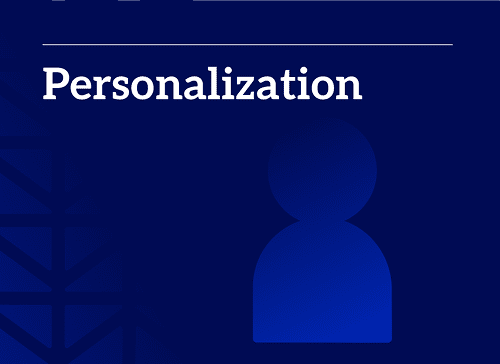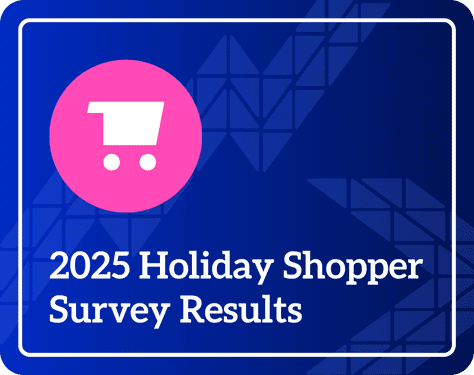Choice overload is real, particularly in an ecommerce environment. As visitors navigate vast online catalogs, they may feel overwhelmed with a seemingly endless selection of items and end up abandoning their virtual shopping trip due to overwhelm. Personalized product recommendations can help mitigate this overwhelm by connecting online shoppers to relevant products.
Consumers, for their part, have come to expect personalization when they shop online. Search Engine Land reports that 83% of consumers are motivated to buy from a brand when the messaging highlights exact products the consumer has recently viewed.
Affluent and middle-aged consumers, in particular, are more likely to make a purchase when content is personalized for them. Product recommendations offer retailers an easy and intuitive way to integrate personalization into the ecommerce buying experience.
What are Personalized Product Recommendations?
In an ecommerce setting, personalized product recommendations tailor product suggestions to a shopper’s preferences and behavior. They can appear in multiple places or channels including webpages, apps, and emails. They may appear as a visitor is browsing on a product page, as part of their personalized search results, or as bundled product groupings, for example, as a complete outfit or complimentary set of items.
Personalized product recommendations can be based on customer attributes, browsing behavior, or situational context. Since the suggestions are based on customer data such as past purchases and real-time browsing behavior, they’re meaningful and relevant, acting as a guide to help a shopper narrow down items and discover products that they’re likely to love.
Personalized Product Recommendations Examples
Personalized product recommendations can be sprinkled along the digital buying journey like breadcrumbs, guiding and augmenting the shopping experience to make it more relevant. AI and machine learning make it even more targeted by automating and adapting recommendations based on real-time inventory availability and customer search behavior.
Here are a few examples of how Monetate clients use personalized product recommendations to enhance ecommerce experiences for their customers:
- UK outdoor clothing brand Musto specializes in sailing and lifestyle apparel. Musto’s product range varies significantly based on specific sports and conditions. Personalized product recommendations ensure that shoppers see relevant items based on their interests and browsing behavior. For example, they boost product reviews for new users arriving from PPC ads, displaying a brief pop-up of 5-star reviews for various products to establish trust and quality, a strategy that led to an uplift in cart additions from this segment.
- Outdoor & Cycle Concepts, the parent group for Cotswold Outdoor, Snow+Rock, and Runners Need, specializes in premium outdoor products. With Monetate’s personalized recommendations, they’ve been able to increase conversion rates and grow basket value across their family of ecommerce sites. They show items other customers viewed in the same category on product display plages which helps shoppers easily compare similar products. At checkout, they use a feature called dynamic bundles to display items frequently bought together with the customer’s basket contents.
- Mr. & Mrs. Smith, a collection of luxury boutique hotels, uses Monetate’s personalized product recommendations on their homepage. They’ve integrated them into carousels that display top-booked hotels in specific regions with recommendations tailored for UK and US members. They’ve spent a lot of time personalizing guest experiences on-site and are now using first-party customer data to personalize their customers’ website experiences.
Best Practices for Personalized Product Recommendations
The above examples illustrate how product recommendations support the entire customer journey. Though the specific approach to integrating recommendations into an ecommerce experience varies based on your goals and audience, there are some best practices that you can keep in mind to ensure smooth sailing for you and your customers.
1. Drive Recommendations with AI and ML
AI-powered algorithms that analyze the perpetual and vast amount of customer data let you scale product recommendations while keeping things personal. AI-driven recommendations use your customers’ browsing history, purchase behavior, and demographic information to display accurate and relevant products, recommendations that adapt based on what a customer is doing on your website or app in real-time.
2. Create Product Bundles
Product recommendations that group complementary or higher-value items, displayed alongside viewed products, can help increase average order value. You can also use ML algorithms to dynamically group items as a set – e.g., an outfit for a clothing retailer or a selection of tools and accessories for a home improvement company. Product bundling is an intuitive (and non-intrusive) up-selling and cross selling approach that enhances a shopper’s journey while drawing directly from your catalog.
3. Get All Channels Involved
Product recommendations aren’t just for websites. You can (and should) extend personalized product recommendations beyond to email blasts, mobile apps, and in-store experiences. Consumers are channel agnostic when it comes to buying stuff – they’ll use all the tools and touchpoints at their disposal to research, consider, and purchase items. Extending personalization across the entire shopping journey is the best way to honor this technology-driven new shopping world we live in since it creates a cohesive, omnichannel shopping experience for your customers.
4. You’re Never Done
There’s no rest for the weary. You should test and optimize your product recommendations strategy continuously. A/B testing and optimization allows you to review different recommendation strategies, placements, and algorithms to see what works for your customers and specific audiences. The insights gained can be used to refine your approach and improve the effectiveness of product recommendations over time.
What is the Importance of Personalized Product Recommendations in Ecommerce?
Personalized product recommendations are an important way retailers can improve customer satisfaction and drive business growth. Here are some benefits they offer for ecommerce experiences:
- Increases average order value: By suggesting complementary, higher-value, and popular items based on shopper interests and behavior, product recommendations encourage customers to add more items (or higher-priced items) to their carts.
- Increases conversions and conversion rates: Relevant product suggestions guide customers to products they’ll love, make the overall digital shopping experience easier, and instill confidence. This all works towards increasing the likelihood of a purchase.
- Drives customer loyalty: Relevancy is a powerful tool that helps build trust and strengthen customer relationships. Personalizing recommendations across touchpoints like your app, website, and email campaigns demonstrates consistency which motivates your customers to return again and again.
- Reduces cart abandonment: Timely and relevant recommendations keep shoppers engaged and help them find what they need more quickly. This decreases the chance they’ll bounce before they buy the items in their cart.
- Increases engagement: Browsing is enjoyable and personalized suggestions make it more so by showcasing new products that a shopper may not have discovered otherwise. This increases engagement on your website and enhances a shopper’s online experience.
Well-timed, relevant product recommendations motivate shoppers to put more in their cart. They let merchandisers curate collections that offer inspiration to shoppers while ensuring customers find the right products. Pushing recommendations across all channels including kiosks, websites, email, shopping apps, and call centers further enhances their effectiveness. Mix a bit of AI and ML into the approach and you’ve got a recipe for powerful, intuitive, personalized ecommerce experiences.



